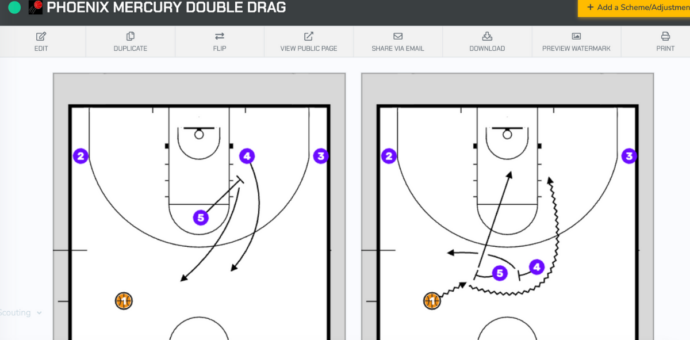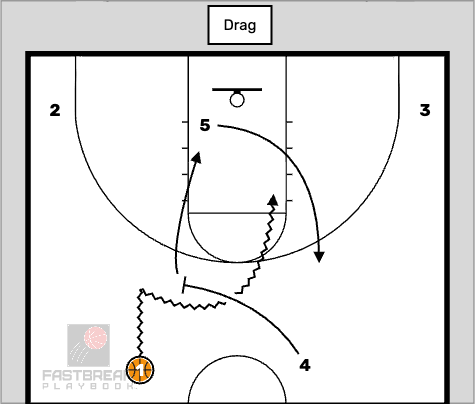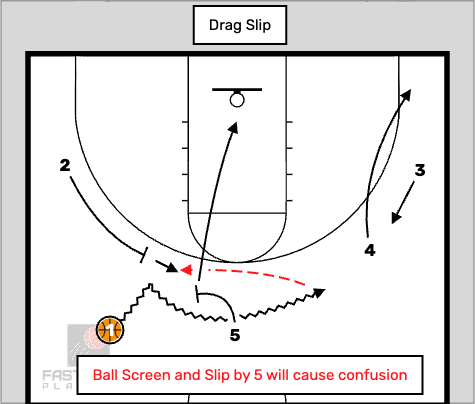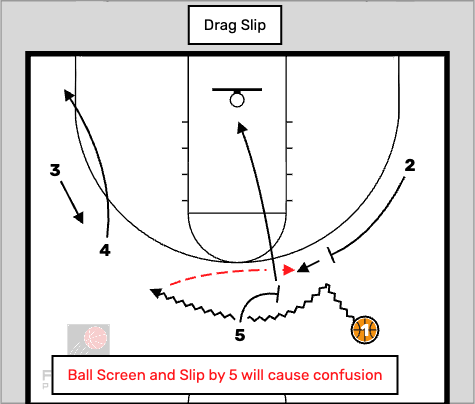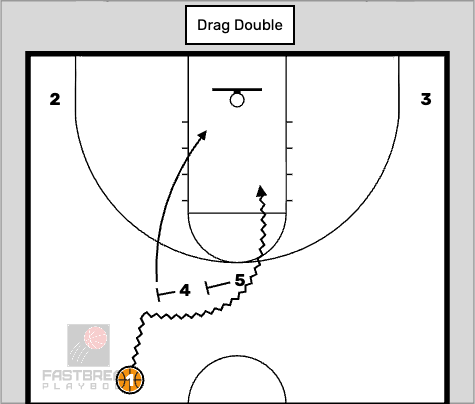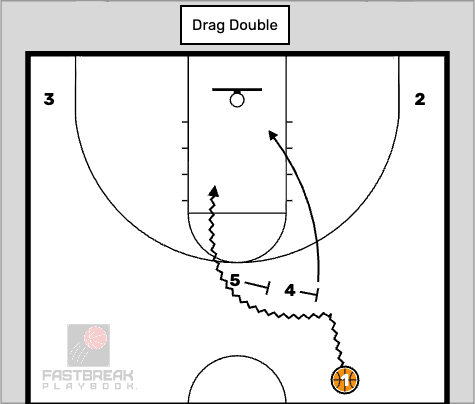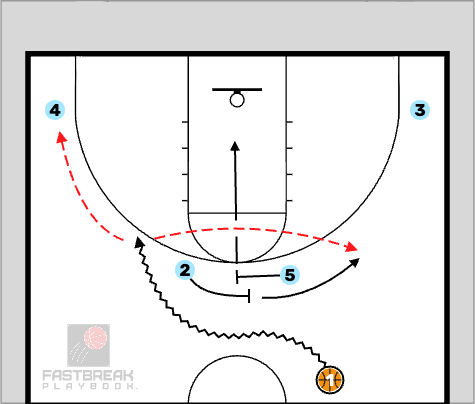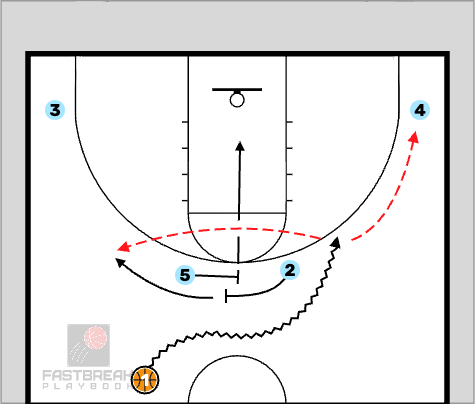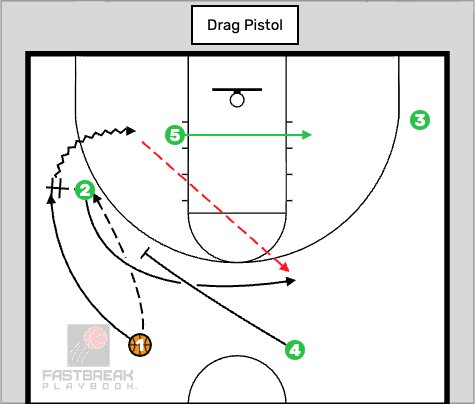Drag is a type of offensive action that excels in transition or secondary break situations. High-scoring teams, known for their pace of play and efficiency, often push the ball and score during these moments. Drag variations are popular at all levels of play, from youth basketball to the NBA, due to their simplicity and effectiveness. In our system, you can find Drag actions in a few different ways:
- Search “Drag”
- Filter Play Type > “Secondary”
- Filter Formation/ Series >”Drag”
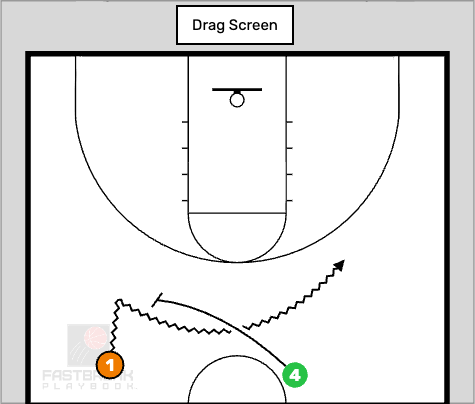
A drag screen is an on-ball screen typically set by a big player immediately during or after the transition break. This action allows for a seamless flow into various offensive sets, with the greatest success observed when teams run 5-out, 4-out, 1-in, or have a trailing post player. The play diagram illustrates an initial drag screen, while the second shows what a drag screen can look like during a secondary break.
Secondary Drag Series
Each Drag set will show how to run on both sides of the floor and explain the movements.
Drag: Notice how the 4 is trailing, and the guards have run the lanes, creating a 4-out, 1-in formation. To maintain spacing, the 4 can roll while the 5 pops. Depending on your lineup and player personnel, all players are interchangeable. The play diagram shows Drag being run from either side of the floor.
Drag Slip (Counter to Drag): This is a counter to the original drag action. In this play, our 5 sets the drag screen before slipping to the rim. The slip screen is highly effective as it forces the defense to collapse, creating opportunities for a kick-out or a swing pass to the perimeter for a shot. If the defense does not collapse, it often results in a wide-open layup due to the defense over-helping on the drag screen.
Double Drag: This concept mirrors the original Drag, but both bigs remain at the top of the key (TOK) area. There is no specific order for who sets the initial drag screen, as it will likely depend on who gets to the position first during the transition. The reads are flexible and should be tailored to the specific player personnel. Having a big who can shoot will significantly improve floor spacing.
Drag Flare: This formation differs from the previous Drag set. Here, our 5 and 3 trail in a 5-out formation. The 2 sets the drag screen during the secondary break, while the 5 sets a flare screen for the 2. To put pressure on the defense, there will likely be a switch on the flare screen from the 5. This creates an advantage for both the 3-point shot and the roll. This set provides multiple scoring opportunities.
Drag Pistol: Drag Pistol represents a more advanced variation within the Drag series. The Pistol action typically occurs in early offense. Pistol involves an interaction between the point guard and a wing player, with a post player at the top of the key.
The initial Pistol action begins with a pass to the wing, followed by a handoff back to the point guard. Meanwhile, the 4 sets a flare screen disguised as a ball screen. This set proves highly effective due to its timing and the advantage of catching defenses before they’re fully set. It creates opportunities for wing isolation for the point guard and a flare for the shooting guard.



